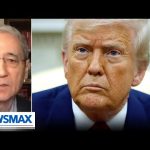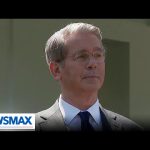President Trump’s 90-day tariff pause and aggressive 125% tariffs on China reflect a strategic shift driven by market pressures and diplomatic maneuvering. The pause, announced April 9, 2025, temporarily lowers most global tariffs to 10% while escalating rates on China. Here’s the breakdown:
### Bond Market Turmoil Forced Action
The decision followed a , particularly by Japan, which triggered a spike in U.S. Treasury yields. This signaled eroding confidence in the U.S. economy and pressured the White House to act. Fox Business’ Charlie Gasparino highlighted this as a key factor, noting that the administration sought to prevent broader economic instability.
### Negotiation Strategy Takes Priority
Treasury Secretary Scott Bessent, now leading trade policy, advocated for a pause to allow to negotiate deals rather than imposing rigid tariffs. Gasparino emphasized that Bessent’s deal-centric approach replaced earlier advisors like Peter Navarro, who favored harsher trade measures. The 90-day window aims to leverage Trump’s “personal involvement” in securing reciprocal agreements.
### China Standoff Escalates
While most tariffs were paused, China faced a —up from 104%—after refusing to back down from retaliatory measures. Gasparino noted that Trump’s team believed Main Street could withstand the fallout better than Wall Street, but bond market volatility complicated this calculus.
### Political Wins Amid Uncertainty
The pause boosted markets immediately, with the Dow surging over 500 points. However, Gasparino cautioned that , and economic risks like stagflation loom if negotiations stall. Critics argue the move prioritizes short-term stability over long-term trade reform.
In summary, the tariff pause blends crisis management with Trump’s hallmark negotiation tactics, aiming to stabilize markets while keeping pressure on China.




